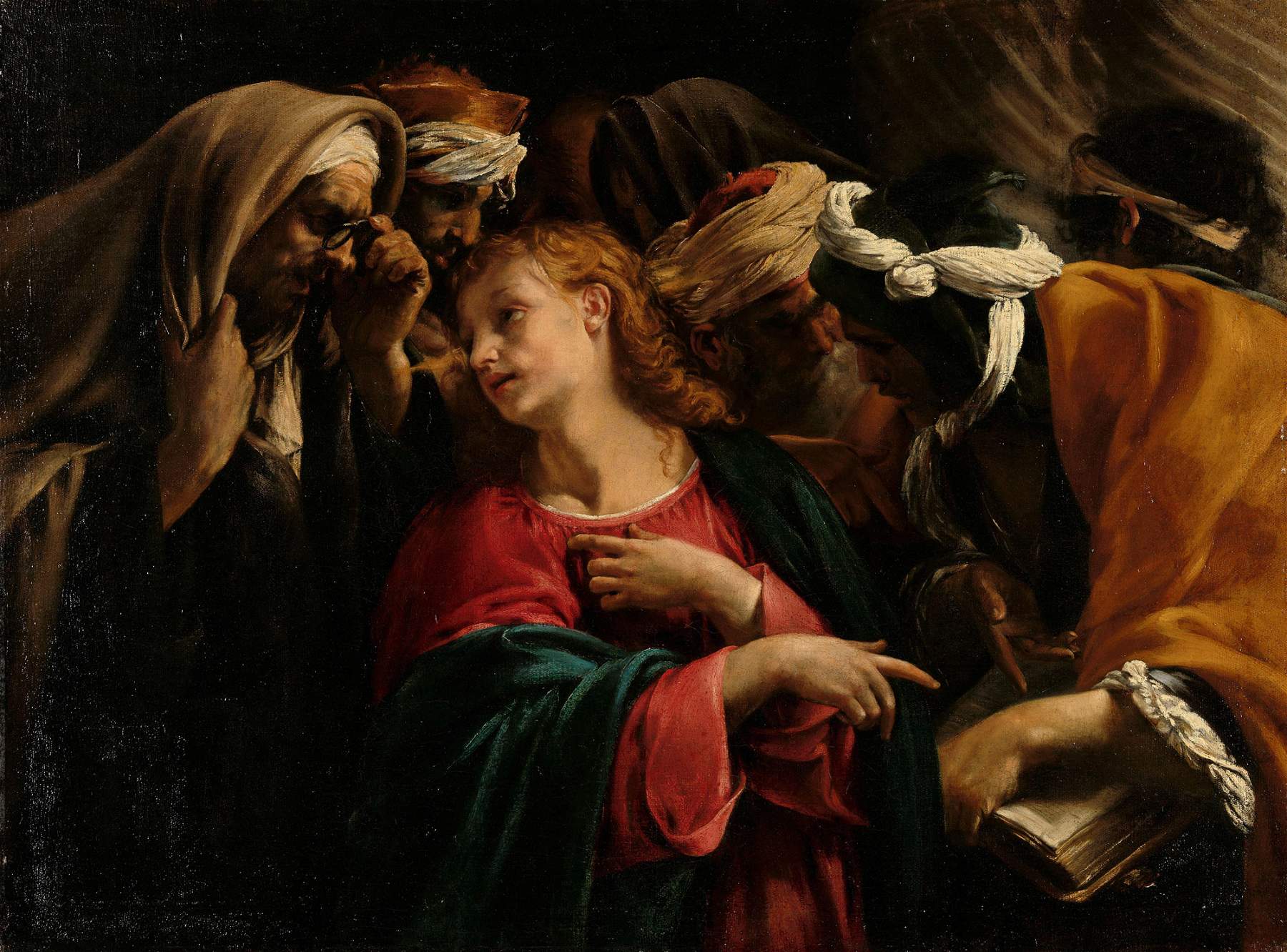The first monographic exhibition of Orazio Borgianni, a great Caravaggesque painter, is in Rome, at Palazzo Barberini
The National Gallery of Ancient Art at Palazzo Barberini is hosting, from March 6 to June 30, 2020, the exhibition Orazio Borgianni. A Restless Genius in Caravaggio’s Rome, the first monographic exhibition dedicated to Orazio Borgianni (Rome, 1574 - 1616), one of Caravaggio’s most important painters. The exhibition, curated by Gianni Papi, displays in the first part eighteen autograph works to retrace Borgianni’s art-historical story, so as to provide the public with a comprehensive portrait of his activity in Rome. To the then capital of the Papal States, the painter, who was born in Rome itself, returned in 1605, after spending several years in Spain, where he had the opportunity to meet El Greco. Borgianni would not move from Rome again, and he had the opportunity to come into contact with Caravaggio: in the last ten years of his career, the artist produced important works and defined an entirely original and innovative style, although it remains clear how he did not remain indifferent to Merisi’s naturalistic innovations.
Palazzo Barberini, in its permanent collection that houses an important nucleus of Caravaggesque works, will host two masterpieces by Borgianni, theSelf-Portrait and the Holy Family with St. John, St. Elizabeth and an Angel: these will be joined by works such as the Vision of St. Francis of Sezze, St. Charles Borromeo from the church of San Carlo alle Quattro Fontane, the Nativity of the Virgin from Savona, Christ among the Doctors, now at the Rijksmuseum in Amsterdam, and the Holy Family from the National Galleries collection. Paintings filled with Caravaggesque cues and presenting at the same time a variety of novel and anticipatory stylistic solutions that make Orazio Borgianni one of the protagonists of those years.
The second section of the exhibition, with seventeen works, examines painters who accepted significant suggestions from Borgianni. These include Carlo Saraceni, linked by personal relationship with Orazio, to the point that both were suspected of having hatched the ambush against Giovanni Baglione, Caravaggio’s rival, in the autumn of 1606; Antiveduto Gramatica, Borgianni’s friend and witness to his will, as well as fecundly influenced by his language in the middle years of the second decade; Giovanni Lanfranco, Simon Vouet, and Giovanni Serodine, three of the leading figures in the Roman artistic milieu between the end of the second and third decade, personalities who owed an obvious debt to Borgianni’s anticipatory achievements of a few years earlier. And then again Marcantonio Bassetti, Carlo Bononi, Guido Cagnacci, Tanzio da Varallo, Giovan Francesco Guerrieri, Luis Tristan and Claude Vignon: artists whose works will be featured in the exhibition.
The exhibition is accompanied by a catalog(Skira Editore) with an essay by Gianni Papi, texts by Daniela Brogi and Yuri Primarosa, and worksheets by Tommaso Borgogelli, Enrico Ghetti and Gianni Papi. Also planned is a program of collateral activities culminating in a study day on May 28 entitled Orazio Borgianni: balances and new horizons at Palazzo Barberini (conference room), with talks by Gianni Papi, Yuri Primarosa, and Flaminia Gennari Santori. Plus: four guided tours with the curator to explore the themes of the exhibition, Friday, March 20, May 8, May 29, and June 12, 2020, at 5 p.m. (participation included in the ticket price. Meet in front of the ticket office, subject to availability); two appointments (dates to be determined) dedicated to audiences with special needs, curated by the Si pArte! (one guided tour in LIS and one for people with intellectual/cognitive impairments. The visits are designed to ensure better accessibility to the collections and exhibitions of the National Galleries); a series of activities for children aged 6 to 12, curated by the Si pArte! Association and the museum’s Education and Research Department: every Sunday (from March 15 until June 28, excluding the first Sundays of the month with free admission), at 11 a.m., young visitors, will be able to participate in the animated visit "Talking Objects. A journey to discover the works of Orazio Borgianni and the painters of his time to learn how to read works of art through the objects represented in them. The animated visit is an opportunity to bring to life and reinterpret through children’s imagination and fantasy the everyday objects that made Caravaggesque naturalism painting famous with storytelling techniques borrowed from theatrical improvisation. Duration: about 75 minutes. Groups max 20 people. Activity by reservation at: didattica@barberinicorsini.org. Meet in front of the ticket office. All activities are free of charge. For two accompanying persons there is a reduction on the ticket cost to 6 euros.
The exhibition (open Tuesday through Sunday from 8:30 a.m. to 7 p.m., last entry at 6:30 p.m.) can be accessed with the Palazzo Barberini ticket (full 12 euros, reduced 2 euros for children between 18 and 25 years old: the ticket also allows access to the Corsini Gallery). For all info, visit the Palazzo Barberini website.
Pictured: Orazio Borgianni, Christ among the Doctors (1607-1609; oil on canvas, 78.1 x 108 cm; Amsterdam, Rijksmuseum)
 |
| The first monographic exhibition of Orazio Borgianni, a great Caravaggesque painter, is in Rome, at Palazzo Barberini |
Warning: the translation into English of the original Italian article was created using automatic tools. We undertake to review all articles, but we do not guarantee the total absence of inaccuracies in the translation due to the program. You can find the original by clicking on the ITA button. If you find any mistake,please contact us.





























